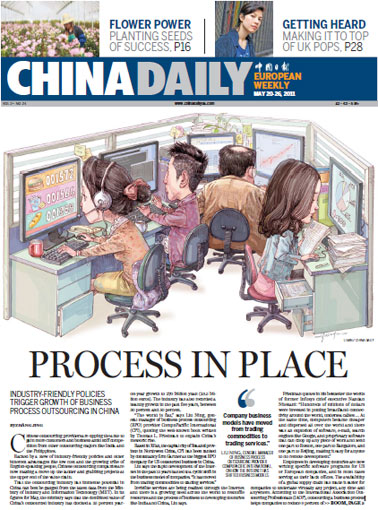Politics
China calls for tsunami warning system
Updated: 2011-05-25 07:19
By Wang Qian (China Daily)
Proposal to link nine countries at risk from killer waves
BEIJING - A tsunami warning system, linking countries in the South China Sea region, has been proposed by China.
"The system will allow countries to share information and enhance their ability to forecast tsunamis or other marine disasters," Yu Fujiang, deputy director of the National Marine Environmental Forecasting Center under the State Oceanic Administration (SOA), told China Daily on Tuesday.
The South China Sea is located in the Pacific seismic belt, often referred to as the Ring of Fire. A tsunami in the region could have devastating consequences for China, the Philippines, Malaysia, Brunei, Indonesia, Thailand, Vietnam, Cambodia and Singapore, Yu said.
If an earthquake, for example, occurred in the Manila Trench, which runs along the western side of the Philippines and is noted for frequent plate movements, the Pearl River Delta and the Daya Bay Nuclear Power Station could suffer severe damage, he warned.
The March 11 earthquake and tsunami, which wiped out coastal communities in northeast Japan and left more than 25,000 dead, caused alarm in countries with exposed coastlines and highlighted the urgent need for some type of warning system, Yu noted.
Zhang Zhanhai, director of department of international cooperation at the SOA, called on the nine countries in the South China Sea region to help establish a warning system that could track a tsunami within 10 minutes of a quake underneath the sea.
Zhang was speaking at the 24th session of the International Coordination Group for the Pacific Tsunami Warning and Mitigation System held on Tuesday in Beijing.
"The system would help these countries share data to reduce the damage caused by a tsunami," he said.
If the proposal is passed by the group, the system will probably be in operation within five years.
Statistics from the US National Oceanic and Atmospheric Administration showed that major tsunamis, on average, occur at intervals of about six or seven years.
To improve preparedness for a tsunami, more than 30 countries in the Pacific region will conduct drills in November.
The drills will replicate the consequences of a mega-disaster, nine earthquakes occurring simultaneously, to test reaction to an approaching tsunami.
The drills will be held every two years.
Yu said if a tsunami formed off China's near coast a warning could be delivered in about 15 minutes.
Warning times depend on how close the tsunami was to the shore and, crucially, how quickly warnings were passed on to the public.
"We can issue warnings on time, but what matters is how soon can the warning be passed to the people," he added.
After the Japan tsunami, the SOA proposed to the State Council, China's Cabinet, that assessments be carried out on the consequences of potential marine disasters to key offshore projects.
In its 12th Five-Year Plan (2011-2015), the SOA plans to install two tsunami monitoring buoys in the East China Sea and one in the South China Sea, where two buoys have already been installed.
A national tsunami warning organization will also be set up, Yu said.
The National Marine Environmental Forecasting Center is China's only tsunami warning center.
E-paper

Thawing out
After a deep freeze in sales during the recession, China’s air conditioner makers are bouncing back
Cool Iron lady
Of good and evil
Build on security initiatives
Specials

Memory lanes
Shanghai’s historic ALLEYS not just unique architecture but a way of life

Great expectations
Hong Kong-born singer songwriter rises to the top of the UK pops.

A diplomat of character
Belgian envoy draws on personal fascination to help build China ties.
